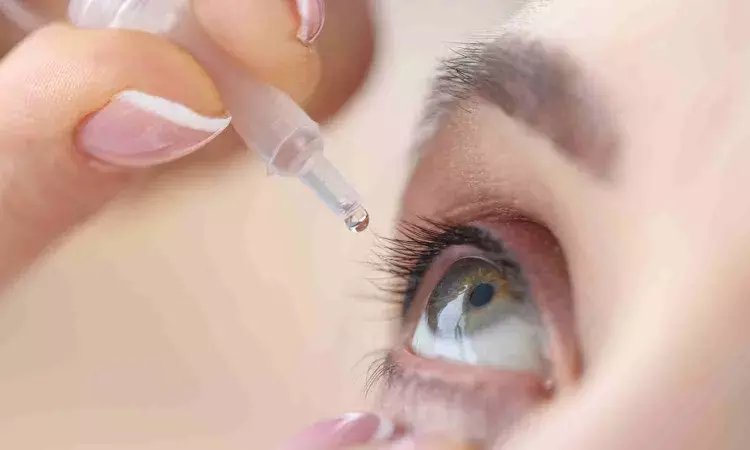- Home
- Medical news & Guidelines
- Anesthesiology
- Cardiology and CTVS
- Critical Care
- Dentistry
- Dermatology
- Diabetes and Endocrinology
- ENT
- Gastroenterology
- Medicine
- Nephrology
- Neurology
- Obstretics-Gynaecology
- Oncology
- Ophthalmology
- Orthopaedics
- Pediatrics-Neonatology
- Psychiatry
- Pulmonology
- Radiology
- Surgery
- Urology
- Laboratory Medicine
- Diet
- Nursing
- Paramedical
- Physiotherapy
- Health news
- Fact Check
- Bone Health Fact Check
- Brain Health Fact Check
- Cancer Related Fact Check
- Child Care Fact Check
- Dental and oral health fact check
- Diabetes and metabolic health fact check
- Diet and Nutrition Fact Check
- Eye and ENT Care Fact Check
- Fitness fact check
- Gut health fact check
- Heart health fact check
- Kidney health fact check
- Medical education fact check
- Men's health fact check
- Respiratory fact check
- Skin and hair care fact check
- Vaccine and Immunization fact check
- Women's health fact check
- AYUSH
- State News
- Andaman and Nicobar Islands
- Andhra Pradesh
- Arunachal Pradesh
- Assam
- Bihar
- Chandigarh
- Chattisgarh
- Dadra and Nagar Haveli
- Daman and Diu
- Delhi
- Goa
- Gujarat
- Haryana
- Himachal Pradesh
- Jammu & Kashmir
- Jharkhand
- Karnataka
- Kerala
- Ladakh
- Lakshadweep
- Madhya Pradesh
- Maharashtra
- Manipur
- Meghalaya
- Mizoram
- Nagaland
- Odisha
- Puducherry
- Punjab
- Rajasthan
- Sikkim
- Tamil Nadu
- Telangana
- Tripura
- Uttar Pradesh
- Uttrakhand
- West Bengal
- Medical Education
- Industry
Ciclosporin A 0.1% emulsion effective in patients with severe dry eye disease: Study

A new study published in the Graefe's Archive for Clinical and Experimental Ophthalmology found that ciclosporin A (CsA) 0.1% cationic emulsion may be safe, efficient, and well-tolerated when used in clinical settings to treat severe dry eye disease. It can be difficult to identify and treat dry eye disease (DED), often referred to as keratoconjunctivitis sicca, in clinical practice. DED is a chronic, multifactorial, and complicated ocular disorder that requires long-term care. The effectiveness, safety, and tolerability of ciclosporin A (CsA) 0.1% cationic emulsion (CE) in regular clinical practice as a remedy for adults with severe keratitis and dry eye disease that continued inadequately controlled with artificial tears were assessed in the PERSPECTIVE study. Thus, Ines Lanzl and colleagues analyzed the data from German ophthalmology clinics to offer additional detailed information on CsA 0.1% CE.
Adults beginning CsA 0.1% CE (one drop in each eye before bed) were the subjects of the study, and they were monitored at Weeks 4, 12, and 24 as well as Month 12. Mean shift from baseline in corneal fluorescein staining (CFS) score (Oxford Grade Scale) at Month 12 was the main outcome. Secondary endpoints looked at adverse events (AEs) and the intensity of ocular signs and symptoms.
A total of 236 patients from 20 German ophthalmology clinics took part in the PERSPECTIVE research. After receiving CsA 0.1% CE, CFS scores of patients significantly decreased starting in Week 4 and continued to do so until Month 12 (P<0.0001). By Month 12, 81.6% of patients had improved their CFS score from baseline.
Significant improvements in the intensity of subjective ocular symptoms (all P ≤ 0.015) and eyelid and conjunctival erythema at month 12 were seen with CsA 0.1% CE (P < 0.001) when compared to baseline. The safety statistics aligned with the established safety profile of 0.1% CE CsA. 95.7% of patients and 97.2% of doctors assessed tolerability as "satisfactory," "good," or "very good."
Overall, a country-level sub-analysis of the PERSPECTIVE study data from German ophthalmology clinics revealed results that are comparable to those reported for the entire study population which are indicative of the treatment outcomes that ophthalmologists may look forward with CsA 0.1% CE treatment in real-life clinical practice. Beginning with Week 4 and continuing through Month 12, CsA 0.1% CE significantly decreased the severity of keratitis and DED signs and symptoms.
Source:
Lanzl, I., Deuter, C. M. E., Lorenz, K., & Geerling, G. (2024). Real-world insights and outcomes related to ciclosporin A 0.1% cationic emulsion for the long-term treatment of dry eye disease in Germany: Country-level sub-analysis of the PERSPECTIVE study. In Graefe’s Archive for Clinical and Experimental Ophthalmology (Vol. 262, Issue 10, pp. 3261–3271). Springer Science and Business Media LLC. https://doi.org/10.1007/s00417-024-06414-z
Neuroscience Masters graduate
Jacinthlyn Sylvia, a Neuroscience Master's graduate from Chennai has worked extensively in deciphering the neurobiology of cognition and motor control in aging. She also has spread-out exposure to Neurosurgery from her Bachelor’s. She is currently involved in active Neuro-Oncology research. She is an upcoming neuroscientist with a fiery passion for writing. Her news cover at Medical Dialogues feature recent discoveries and updates from the healthcare and biomedical research fields. She can be reached at editorial@medicaldialogues.in
Dr Kamal Kant Kohli-MBBS, DTCD- a chest specialist with more than 30 years of practice and a flair for writing clinical articles, Dr Kamal Kant Kohli joined Medical Dialogues as a Chief Editor of Medical News. Besides writing articles, as an editor, he proofreads and verifies all the medical content published on Medical Dialogues including those coming from journals, studies,medical conferences,guidelines etc. Email: drkohli@medicaldialogues.in. Contact no. 011-43720751


